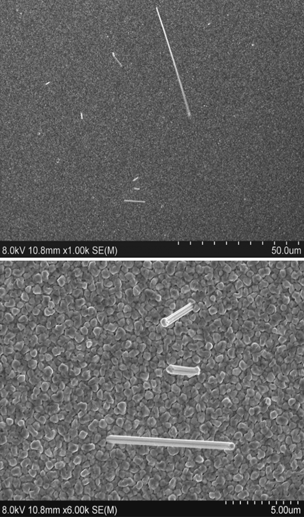Crossref Citations
This article has been cited by the following publications. This list is generated based on data provided by Crossref.
Niraula, D.
and
Karpov, V. G.
2015.
The probabilistic distribution of metal whisker lengths.
Journal of Applied Physics,
Vol. 118,
Issue. 20,
Borra, Vamsi
Itapu, Srikanth
and
Georgiev, Daniel G
2017.
Sn whisker growth mitigation by using NiO sublayers.
Journal of Physics D: Applied Physics,
Vol. 50,
Issue. 47,
p.
475309.
Subedi, Biwas
Niraula, Dipesh
and
Karpov, Victor G.
2017.
The stochastic growth of metal whiskers.
Applied Physics Letters,
Vol. 110,
Issue. 25,
Liu, Yushuang
Zhang, Peigen
Yang, Li
Tian, Wubian
Zhang, Yamei
and
Sun, Zhengming
2018.
Spontaneous Ga whisker formation on FeGa3.
Progress in Natural Science: Materials International,
Vol. 28,
Issue. 5,
p.
569.
Borra, Vamsi
Oudat, Osama
Georgiev, Daniel G.
Karpov, Victor G.
and
Shvydka, Diana
2018.
Metal whisker growth induced by localized, high-intensity DC electric fields.
MRS Advances,
Vol. 3,
Issue. 57-58,
p.
3367.
Borra, Vamsi
Georgiev, Daniel G.
Karpov, V. G.
and
Shvydka, Diana
2018.
Microscopic Structure of Metal Whiskers.
Physical Review Applied,
Vol. 9,
Issue. 5,
Oudat, Osama A
Borra, Vamsi
Georgiev, Daniel G
and
Karpov, Victor G
2019.
The statistics of tin whisker diameters versus the underlying film grains.
Journal of Physics D: Applied Physics,
Vol. 52,
Issue. 16,
p.
165305.
Saitou, M.
2019.
Generation of Sn Whiskers During Electrodeposition.
International Journal of Electrochemical Science,
Vol. 14,
Issue. 1,
p.
625.
Lujan-Regalado, Irene
Kirubanandham, Antony
Williams, Jason J.
and
Chawla, Nikhilesh
2019.
Nucleation and Growth of Tin Hillocks by In Situ Nanoindentation.
Journal of Electronic Materials,
Vol. 48,
Issue. 1,
p.
58.
Zhang, PeiGen
Ding, JianXiang
Liu, YuShuang
Yang, Li
Tian, WuBian
Ouyang, Jian
Zhang, YaMei
and
Sun, ZhengMing
2020.
Mechanism and mitigation of spontaneous Ga whisker growth on Cr2GaC.
Science China Technological Sciences,
Vol. 63,
Issue. 3,
p.
440.
Oudat, Osama
Arora, Vidheesha
Ishmael Parsai, E
Karpov, Victor G
and
Shvydka, Diana
2020.
Gamma- and x-ray accelerated tin whisker development.
Journal of Physics D: Applied Physics,
Vol. 53,
Issue. 49,
p.
495305.
Borra, Vamsi
Itapu, Srikanth
Karpov, Victor G.
and
Georgiev, Daniel G.
2022.
Modification of Tin (Sn) metal surfaces by surface plasmon polariton excitation.
Scripta Materialia,
Vol. 208,
Issue. ,
p.
114357.





